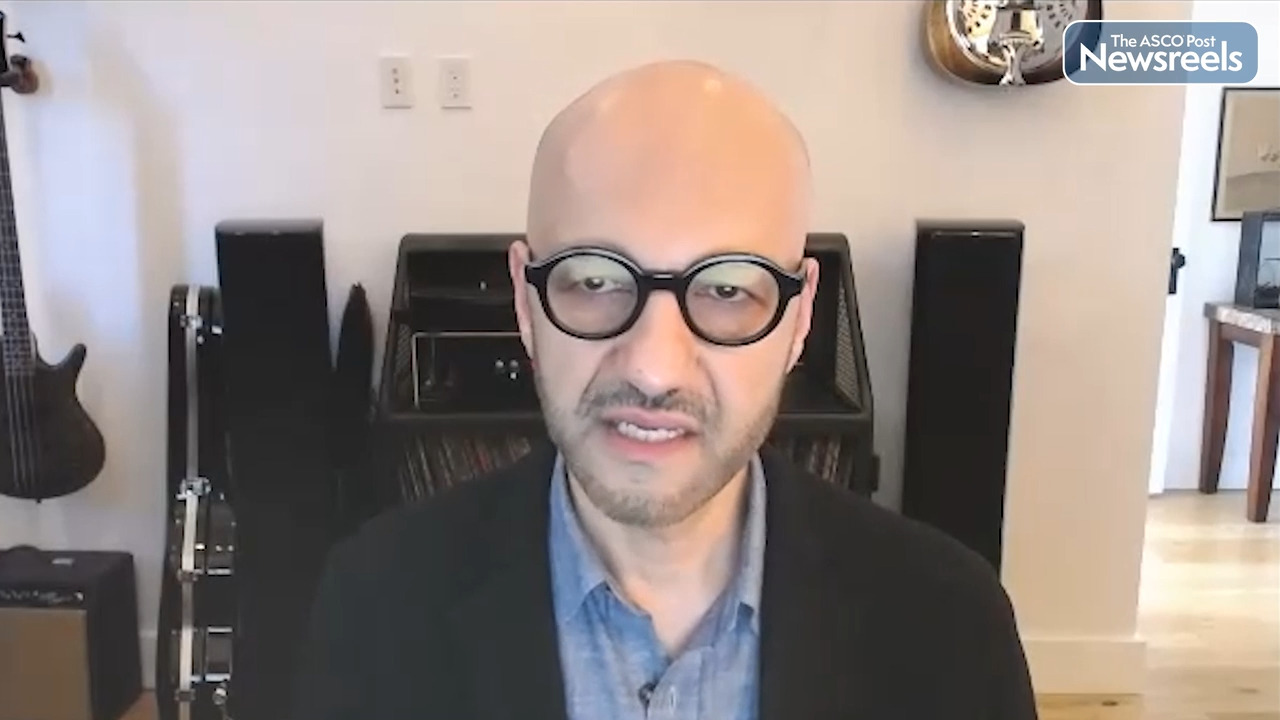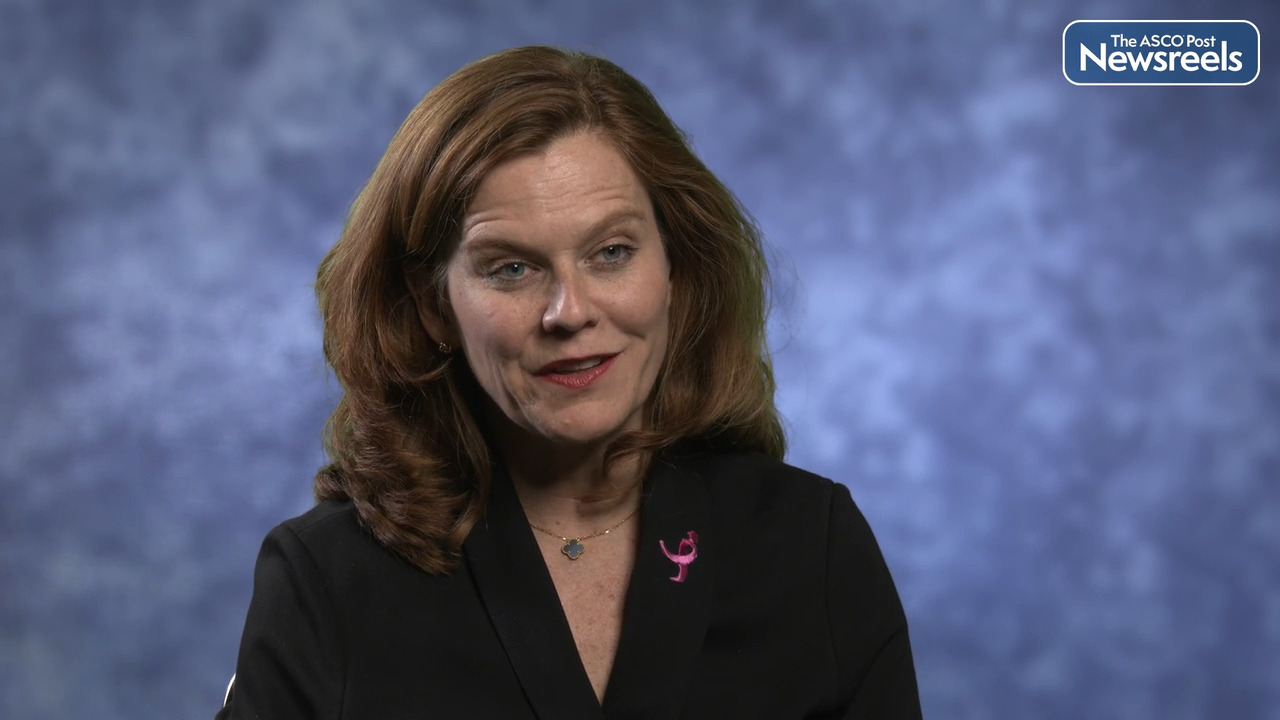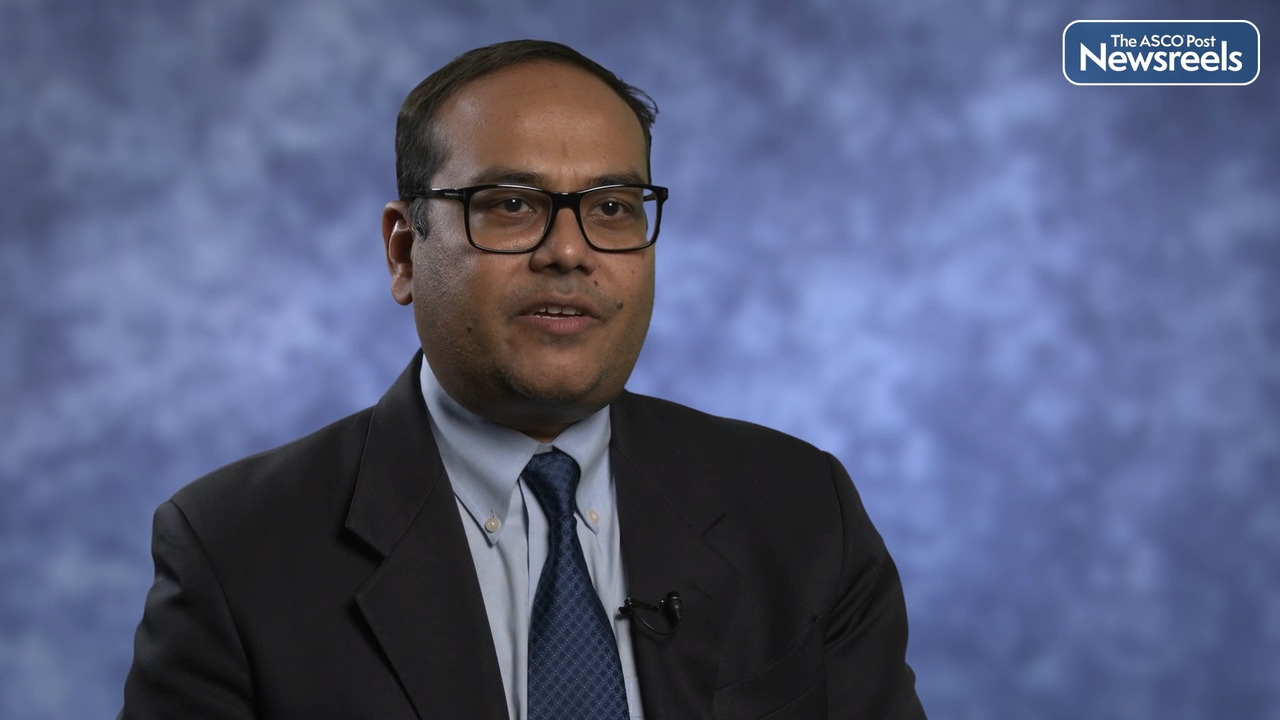Transcript
Disclaimer: This video transcript has not been proofread or edited and may contain errors.
SERENA-2 is a randomized phase two trial of two doses of camizestrant, a novel oral selective ER degrader, versus fulvestrant in patients with ER-positive, HER2-negative metastatic breast cancer that had received prior treatment with endocrine therapy. The reason we designed this study is to test this novel endocrine therapy, camizestrant, an oral SERD that degrades and inhibits more potently the estrogen receptor with respect to the current endocrine therapies.
So SERENA-2 enrolled patients that were postmenopausal, that had to have progressed to prior endocrine therapy, could have received up to one line of endocrine therapy in the metastatic setting and one line of chemotherapy in the metastatic setting, and could have measurable or evaluable disease. And the patients were stratified according to prior treatment with CDK4/6 inhibitors and the presence of lung or liver metastasis, and were randomized to receive camizestrant at three doses, 75 milligrams, 150 milligrams or 300 milligrams, or the current standard of care, fulvestrant.
The arm of camizestrant 300 milligrams was discontinued early due to strategic reasons in the absence of toxicity concerns. Now, 240 patients were included in the trial, all postmenopausal, all with ER-positive breast cancer, and about 20% of the patients had received prior chemotherapy in the metastatic setting. And we designed the trial to include a population of patients, 50% of them had to received prior CDK4/6 inhibitors and that is exactly what happened. About 58% of patients had visceral metastasis lung or liver metastasis, and about 35% of the patients had ESR1 mutation identified in plasma at baseline.
Now the primary endpoint of the trial was progression free survival according to the investigator assessment and camizestrant both at 75 milligram and 150 milligram improved progression free survival in comparison with fulvestrant. The hazard ratio for the 75 milligram comparison was 0.58 with the median PFS for camizestrant of 7.2 months compared with 3.7 months for fulvestrant. And the hazard ratio for camizestrant 150 was at 0.67 with 7.7 months for camizestrant 150 compared to fulvestrant.
The improvement of PFS of camizestrant when compared with fulvestrant was also apparent in important subgroups of patients, like patients previously treated with CDK4/6 inhibitors, patients with lung or liver metastasis, patients with the presence of ESR1 mutation, and patients with evidence of ER-driven disease. A very important point is that this treatment was very well tolerated. Drug discontinuations, drug reductions due to adverse events were very infrequent across all the population of the trial. The most frequent adverse events associated with camizestrant were photopsia, bradycardia, asthenia, and arthralgia. But most of these adverse events were grade one. So grade one bradycardia means it's perfectly asymptomatic. The patient does not complain of any symptom. And the photopsia was very well tolerated because patients could continue with their daily activities.
So in conclusion, in summary, SERENA-2 met its primary endpoint. It is the first evidence that range of doses of an oral SERD, in this case camizestrant, is superior in terms of progression free survival respect to the standard of care, fulvestrant, in patients with ER-positive, HER2-negative metastatic breast cancer that had received prior endocrine therapy. Currently, there are two trials on going that are testing camizestrant in the first-line setting. These are SERENA-4 and SERENA-6, and these trials will build more evidence regarding the activity of this new drug for patients with ER-positive breast cancer.





